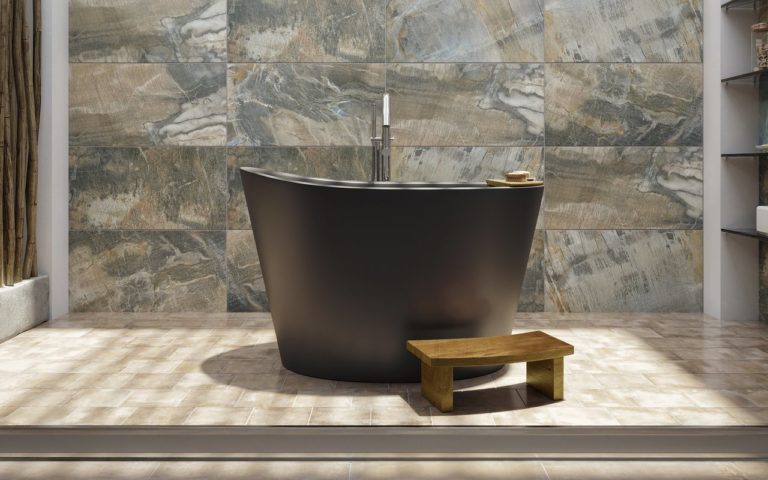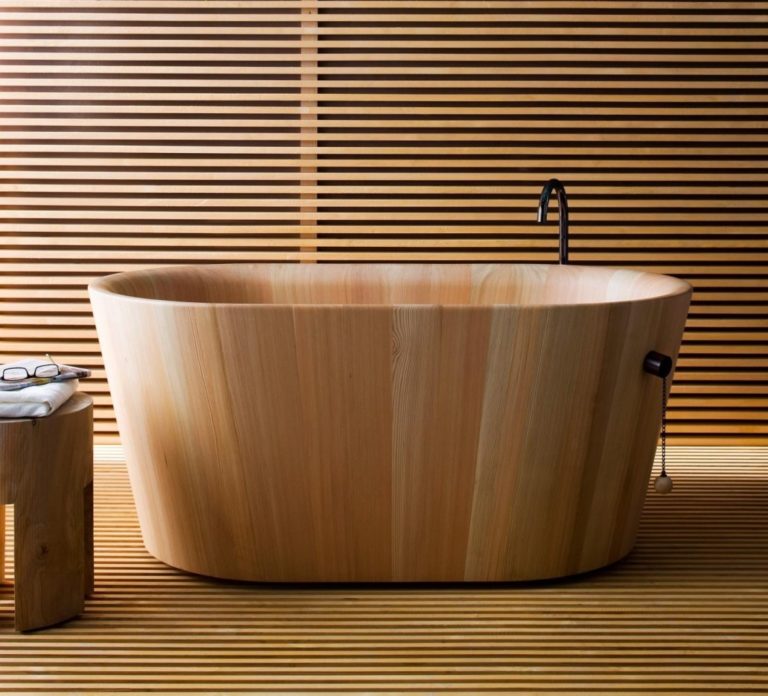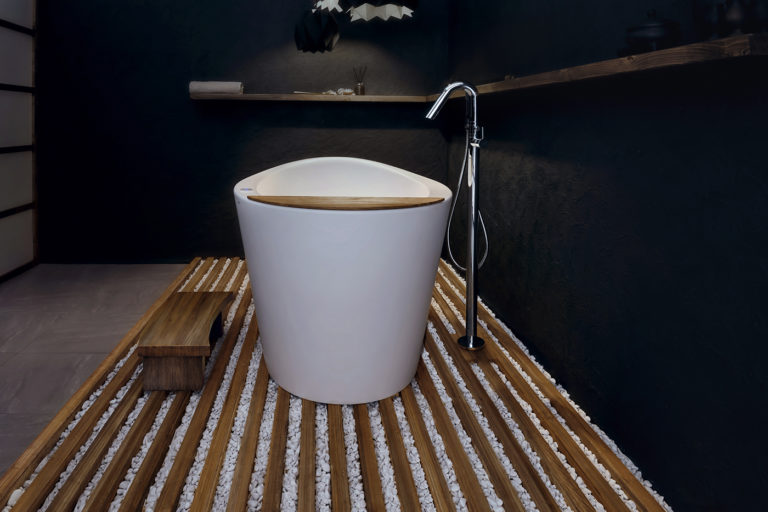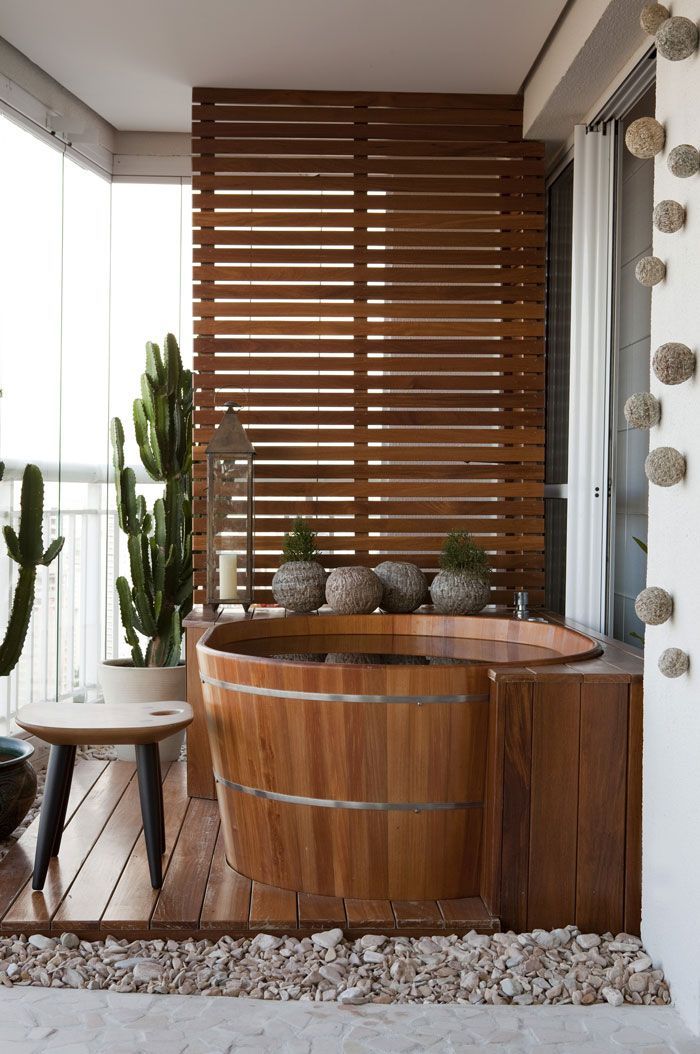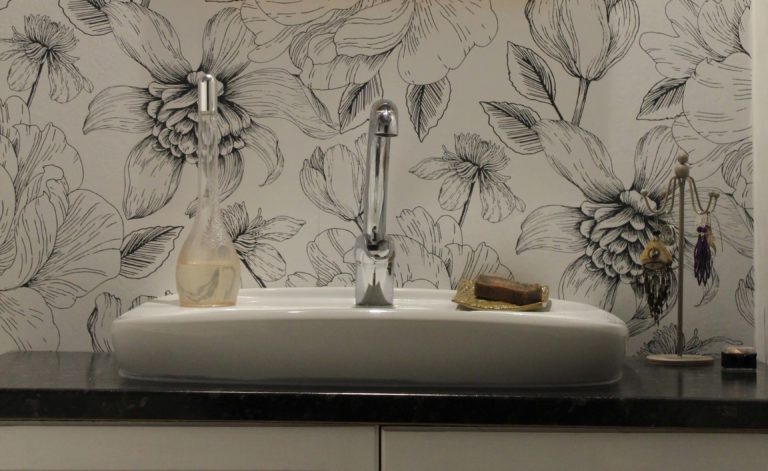
Japanese soaking tubs are fundamentally different from the types of baths used for hygiene procedures by representatives of other peoples. We can say that they differ in the very concept of washing. These are rather health-improving and rejuvenating procedures. The Japanese ritual of ablution (for Buddhists, ablution is precisely a ritual) is an alternation of several baths, each of which is maintained at a certain temperature.
What is a Japanese soaking tub?
The list of components of a traditional Japanese soaking includes two main elements. Moreover, in different provinces, they bear different names, which is why confusion often arises:
The Japanese soaking tub is equipped with a shower for washing away sweat and dirt. If possible, it is complemented by a small pool with cold water.
The main component of a Japanese soaking tub is a special container for immersion to soak. Visitors to Japanese baths are cleansed, receive a therapeutic and health-improving effect not from exposure to heated air, as in saunas, and not from high humidity, as in Russian baths, but from exposure to hot water, pebbles, or sawdust heated to a certain temperature.
Features of Japanese bath
The bathing procedure in Japan includes several stages. Ablution begins with a shower. The Japanese showers are a must since it is customary to wash off dirt, sweat, dead skin particles, and various impurities under running water. No soap is used. Use small towels or cloths instead of washcloths. Ofuro – is a kind of Japanese bath with hot water, the temperature of which is maintained continuously, you can spend no more than 15 minutes. After leaving the hot water soaking tub, the Japanese thoroughly wipes off and rests, preparing for the procedure with heated sawdust or pebbles. The procedure lasts no more than 15 minutes. After that, you can relax, splash in the pool, drink aromatic green tea, lie for about an hour on the couch. A Japanese bath is, first of all, the most comfortable relaxation. All actions taken during the bathing procedure have one goal – to relax the body as much as possible.
Soap is traditionally not used in Japanese baths. The skin is cleansed by soaking in heated water and gentle massage with heated sawdust.
Amazing Japanese soaking tubs “Ofuro”
The traditional Japanese soaking tub “Ofuro” got its name from two components – the politeness prefix “o” and the actual name of the bath “furo”. Traditionally, aromatic woods (for example, cedar or teak) were used to make deep wooden bathtubs. Coniferous wood, when heated under the influence of high temperatures, saturates warm water with oils that are beneficial to human health. Before diving, the Japanese must shower, so representatives of the same family can take turns soaking in the same bath. In multiple baths, soaking tubs are filled with mineralized water from hot springs, which increases the procedure’s effectiveness. The water warms up from 35 (for beginners) to 50 Celsius (for experienced bathers). Also, beginners are allowed to stay in the water for no more than 5-10 minutes, carefully observing their condition. Bathers immerse themselves in water to the chest so that the water is below the heart’s level. Deeper diving can lead to a deterioration in general conditions. Since the pressure in highly heated water rises, the heart rate increases to 120 beats per minute, this rule is mandatory.
Traditional and modern “Ofuro”
Japanese ofuro differs from the baths used by other peoples in a deeper and more compact sink tube. The tub’s shape is explained by the fact that ofuro was created to relax at home in heated water, as in natural thermal springs, which Japan abounds in. It is customary to sit in an upright position in natural springs, immersed up to the neck. The bathtub’s compact size is electric supplies explained by the need to spend wood on heating water and maintaining the temperature while bathing. It was rather difficult for the Japanese to collect them. Modern ofuros are equipped with wood-burning stoves. In apartments, they are connected to the hot water supply system.
Traditional round or oval soaking tubs are made with small special seats and lids to prevent the water from cooling down. Steps and handrails can be installed to make it easier to get out of the bathroom.
Modern ofuro is made not only from wood but also from metal (for example, forged copper, stainless steel), artificial materials (acrylic).
Baths made of bamboo and ceramics look stylish and provide full relaxation. Modern designers offer soaking tubs in a variety of forms:
Depending on the wishes and features, the owners of houses and apartments can order ofuro:
Ofuro can be installed in the bathroom, on the terrace, or outdoors. Metal models of non-standard shapes look original and unusual.
What are the health benefits
While doing a Japanese bath, it is customary to perform a massage with a hand mitt, during which the skin is thoroughly cleaned. A feature of the Japanese rite of ablution is the combination of the four elements – water, earth, fire, and air. This is why many ofuro connoisseurs explain the unique health effect.
Ofuro is prescribed as a rehabilitation procedure after heart attacks, but only under doctors’ strict supervision. Active sweating leads to an improved blood supply so that nutrients enter all cells of the body. For Japanese women, Ofuro replace the beauty parlor, since staying in the bathroom has a peeling effect. Moreover, after such a deep cleansing of the face, the cream does not need to be applied. Ofuro eliminates premature wrinkles, helps to maintain skin tone.
Regular procedures in Japanese bathing affect human health in this way:
Athletes use a Japanese soaking tub for relaxation, rejuvenation, and quality rest. During cold periods, the Japanese warm themselves in the bathroom to prevent rheumatism and flu, sore throat, etc.
How to use “Ofuro” soaking tubs
Mineral salts, decoctions of medicinal or aromatic herbs, aromatic oils can be added to ofuro water. Soap is not acceptable. Washing in the shower before soaking in the bathroom is a must. After leaving the ofuro, it is customary to dry yourself with a towel, rubbing the skin firmly—duration of sitting in hot water – no more than 15 minutes.
Japanese soaking tubs fit perfectly into the interior of modern rooms due to the variety of designers’ models. In a country house, you can install a traditional open ofuro with seats and a special cover.


